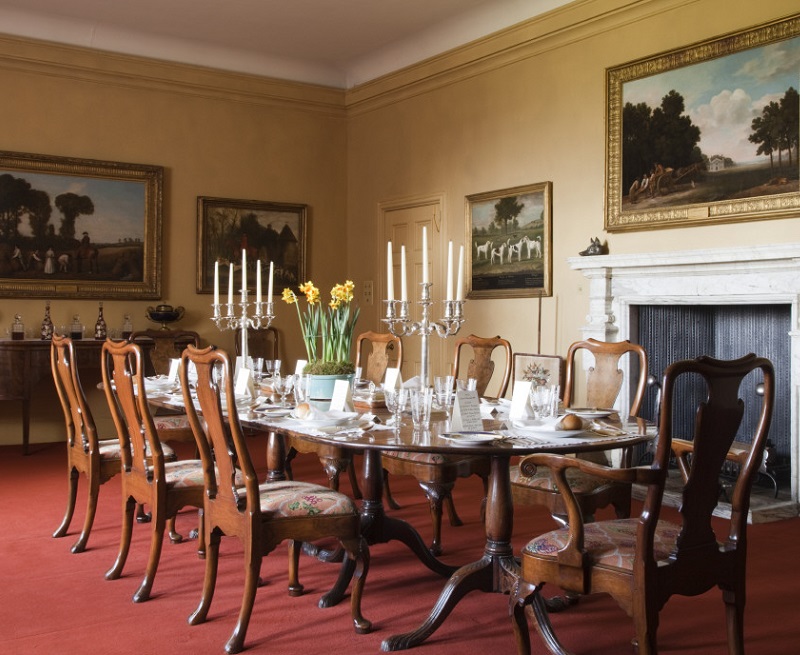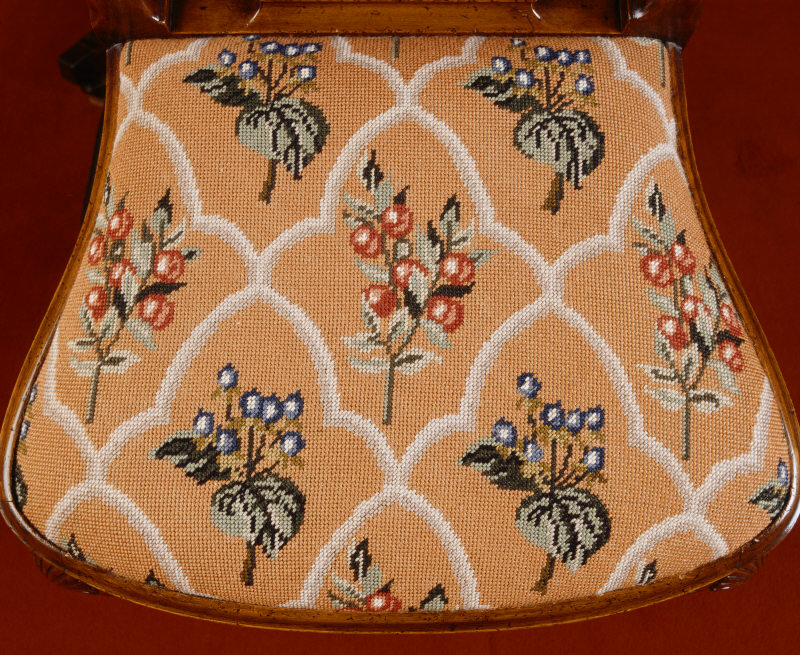Our research revealed numerous stories of disability built and woven into heritage buildings and objects. At Upton House, Marcus Richard (Dick) Samuel, the third Viscount Bearsted, embroidered the upholstery on these dining room chairs. This was part of his rehabilitation for an injury to his hands, which he sustained during the Second World War.


The Dining Room at Upton House, Warwickshire. ©National Trust Images/Nadia Mackenzie
George I style walnut dining-chair tapestry seat in a repeat flower design embroidered by 3rd Lord Bearsted, in the Dining Room at Upton House, Warwickshire. ©National Trust Images/Nadia Mackenzie
He embroidered twelve chair seat covers, possibly one for each month of the year, with seasonal floral designs. We do not know much about Dick’s experience of this, although it is rumoured that he would get his family to embroider the ‘boring’ backgrounds, leaving the more interesting sections for himself. Embroidery was often taught as a means of post-war rehabilitation at this time, and the designs likely came from the Royal School of Needlework at Hampton Court.
Alternative reading
We invited people with lived experience of disability to offer their own personal reflections on some of the stories in Everywhere and Nowhere. In the section below researcher Dr Angela Stienne offers an alternative reading of Marcus Richard’s embroidered chairs.
Can we transmute the invisible?
by Angela Stienne
A synthetic hot water bottle, carrying equal part warmth and relief.
A watertight container inside a purse, that holds valued medicine.
An acupressure mat neatly placed underneath a bed, for ease of access and movement.
A manuscript on a bedside table, bringing dreamlike escapism on challenging days.
A chair, embroidered with patterns of enchanted flowers, each thread restoring injured hands.
What if the stories of disability are found in the mundane, in the everyday objects, with meanings at first unnoticeable? Everyday objects, used by many without much discernment, that form a collection of objects – a toolkit – central to the daily lived experience of disability. We often search for the extraordinary, the out of the ordinary, when looking for someone’s lived experience of disability, for so often we other the disabled.
But we can transmute the invisible. And a chair can hold untold stories of a lived experience, its timeworn timber and yarn threads holding a human story waiting to be told.